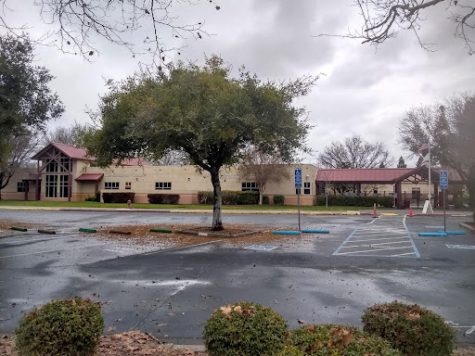New SCOE program trains students to be education reporters
Sacramento School Beat started with a summer training in July 2021 but the idea for the program actually emerged before 2020.
January 27, 2022
Sacramento School beat, an effort to train high school students to report on their schools and districts to help compensate for the fewer professional reporters covering schools launched in Sacramento this past fall, funded by the Sacramento County Office of Education and nonprofit donors.
“This program is where students from the Sacramento County area write on schools and education in general. Typically student reporters do stories around their school and relationships touching on education,” said Jack Fedor, a Sacramento School Beat reporter from Natomas Pacific Pathways Preparatory.
All the stories generated by the student reporters are shared with local Sacramento professional media and are free for them to use in order to help build back up school and education coverage in the region.
Sacramento School Beat (https://sacschoolbeat.com/) started with a summer training in July 2021 but the idea for the program actually emerged before 2020.
“About two and a half years ago I was talking to Louis Freedberg, then the executive director of Edsource.org. We had worked on youth journalism projects in the past and both of us bemoaned the fact that there are few education reporters anymore due to job cuts in the newspaper industry. Schools don’t get the coverage they used to,” said Steve O’Donoghue, the director of Sacramento School Beat.
This program was made possible by multiple grants from different organizations in Sacramento.
“The core funding is coming from the Sacramento County Office of Education. California Black Media and the Dow Jones News Fund also gave us small grants and we are talking to some other funders to see if they’ll throw in more funding in order to hire more students,” said O’Donoghue.
Students report on schools and education from August to May and receive a $1200 stipend at the end of the academic year.
Starting this program, the program staff encountered multiple challenges as there were variables they did not account for in planning, especially Covid-19.
“Covid meant we couldn’t meet with students in person in the summer. It made it harder to recruit and we had to rely on people to pass the word. We were learning things as we went,” said O’Donoghue.
However, a flip side to the Covid challenge, reporter Amaya Davis from Foothill High School said she found that there are more topics to write about.
“In the sense that you have more to write about now because there’s always something that’s relevant because people always want to hear about COVID,” said Davis.
Participants say there have been numerous benefits from the program, which requires each student to produce a minimum of one story a month.
“It was frustrating at first but it got a little easier once I got comfortable with the new writing style,” said Davis. “Besides the writing style I formed opportunities and connections that I probably wouldn’t have made otherwise,” said Davis.
A small staff supports the student reporters. O’Donoghue coordinates and administers the program and works as a writing coach for half of the students.
Karl Grubaugh, a former professional copy editor and long-time journalism adviser at Granite Bay High School, California, is the other writing coach and helps instruct the students in journalism practices.
Casey Nichols, a retired journalism adviser and former sports reporter, is the web guru and maintains https://sacschoolbeat.com/.
Tess Townsend, is a freelance journalist and a copy editor for Sacramento School Beat.
Townsend said. “I would definitely say what I’ve seen is that they’ve gotten better in writing clarity, and focusing on the key facts instead of getting distracted. I would also say I’ve seen an improvement in the amount of reporting.”
“I helped develop the summer program in kind of a support role. I’m not leading the organization. I do things to support Steve’s, Karl’s and Casey’s work, so whereas they’re working with (students) directly, I’m coming in at the end of the process and helping with editing,” said Townsend.
Plans are to attract more funding to add more student reporters and cover more districts in the Sacramento region and to build out a collaborative effort with local college journalism programs to feed students into the next level of journalism.
The student reporters meet online via Zoom once a month for planning meetings with the staff and to have presentations by professional journalists on relevant topics. ke a teenager.
Currently students from Sacramento secondary schools Foothill High, C.K. McClatchy High, Natomas Pacific Pathways Preparatory, Rio Americano High, Kit Carson International Academy and Mira Loma High are all represented in the program. More schools and districts are planned to be included in 2022-23.










